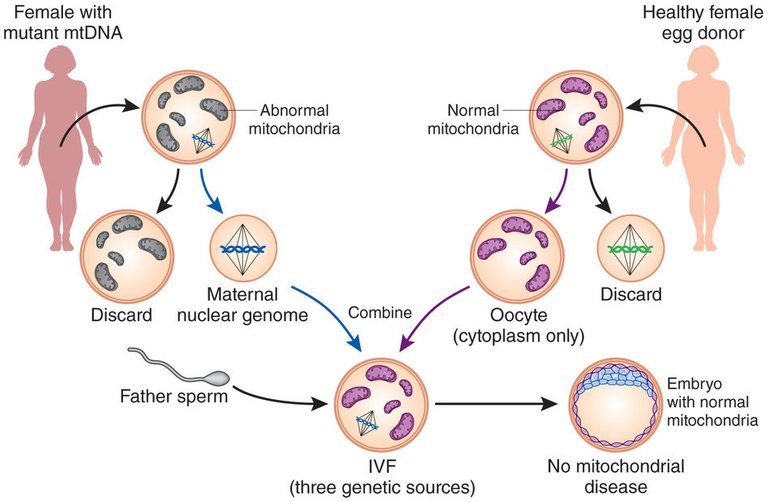Spouses have tried to create a family for 20 years, but 4 miscarriages and 2 dead babies have put an end to their hopes.The reason was the mutation of genes in the mitochondria of a woman, and the only solution to the problem is to have a child with a hybrid genome from three parents. Today's story is about how even religious prejudices did not stop loving each other people on the road to happiness to have children.
Mitochondria are former microorganisms that were absorbed by a more developed single-celled billion years ago. In exchange for comfortable conditions, the "parasite" began to synthesize for the host cell the molecules ATP - the fastest and most universal source of energy in cells. Therefore, mitochondria is also called an autonomous intracellular "power station", which makes the host cell more independent from contact with the substrate. The "friendship" of the two microbes became the basis for the evolutionary step towards the emergence of multicellular organisms - without this, the existence of animals and man would be impossible. Since then, in our cells, two genomes are the main and mitochondrial genomes:

Mitochondria reproduce independently, and their number depends on the need of the host cell for energy. In the course of its own division, the host cell randomly distributes mitochondria between its daughter cells.
Mutations of mitochondrial genes cause severe and incurable diseases of energy metabolism. It all starts with an accidental mutation in a single mitochondria that transmits the defective gene to its copies. If such mutants accumulate in the women's eggs, they are transmitted to the offspring. From a man, mitochondrial diseases are not inherited, since the mitochondria are in the tail of the sperm, which does not enter the egg during fertilization.

So it turned out that the woman, from the example we examined, a large number of mutants turned out to be in the eggs, so she herself was completely healthy. But her two children were killed from massive necrosis of neurons of the brain, which are most demanding of access to energy.

To solve this problem and break the vicious circle, a method of "transferring pronuclei" of parents to a donor egg with healthy mitochondria was developed. To do this, "in vitro" the egg of the future mother is impregnated with the father's sperm - a zygote is formed with two pronuclei of the parents that have not yet merged into one nucleus (in the scheme below, 1). In parallel, the egg cell from the female donor, which contains healthy mitochondria in the cytoplasm, is fertilized by donor sperm - this is only necessary to initiate the transformation of the egg into a zygote ready for division (2). Since we only need donor mitochondria, the donor pronuclei from the donor egg are removed (3), and their pronuclei (4) are inserted in their place. The resulting zygote contains genes from three people: the donor mitochondrial genome and the main gene from future mothers and fathers. Within a day the division of the zygote begins and an embryo is formed, between which the multiplying donor mitochondria are distributed. The embryo is then implanted into the mother's uterus for later development.

However, this technology did not suit the Muslim couple, since the already-fertilized zygote was supposed to be destroyed. Therefore, the method of "replacement of the nucleus", which is performed before fertilization, was proposed. To do this, the core of the donor egg with healthy mitochondria is replaced by the nucleus of the future mother, and only then the "in vitro" fertilize the already hybrid egg with the sperm of the future father. Then, as in the first case, a hybrid embryo with genomes from three people is implanted into the mother's uterus.

The boy was born back in April, but the doctors followed him before promulgating the results. In his cells, about 1% of the mutant mitochondria were found, which fell into the donor egg during the suction of the nucleus from the maternal ovum. This is a very good indicator, given that the proportion of defective mitochondria can reach 18% without developing severe symptoms.
This technology was first implemented by American specialists on the territory of Mexico, as in the developed countries the described manipulations with human cells are prohibited. Another similar example of liberal views on medical experiments is China, in which the first transplantation of the human head is planned at the end of the year.
More information about this can be found here.